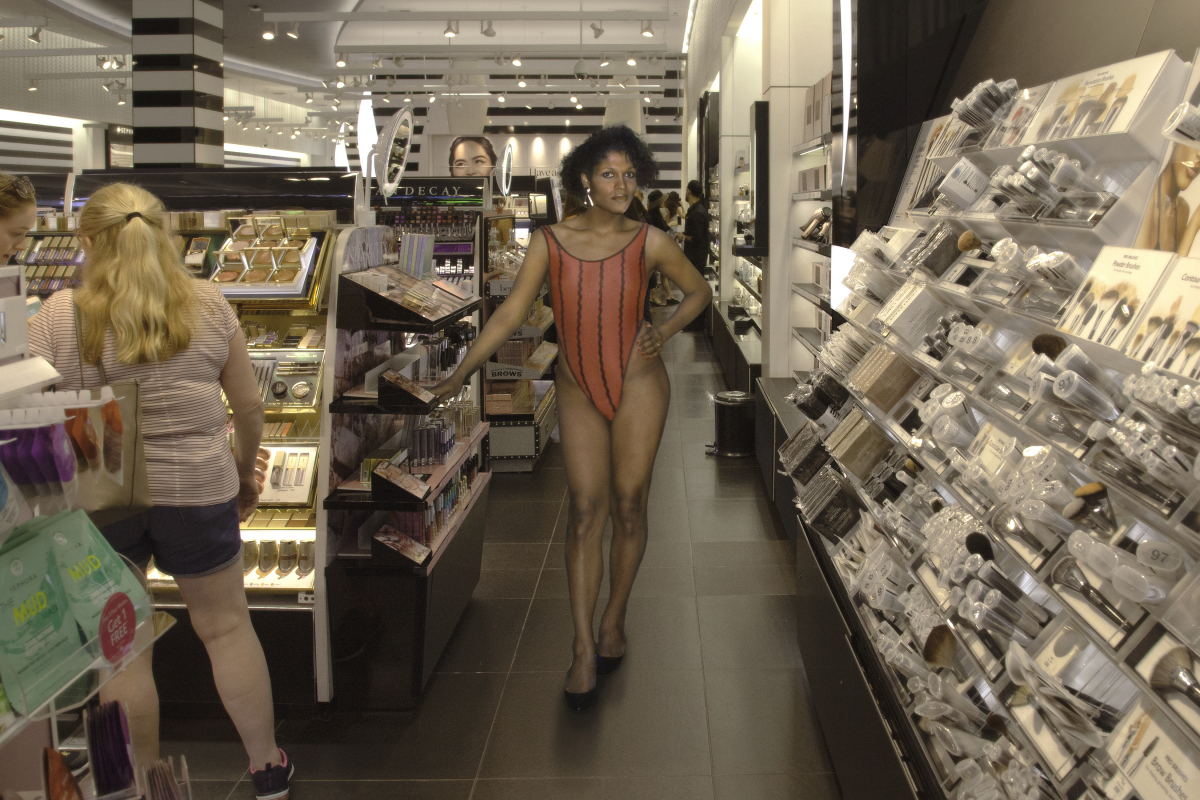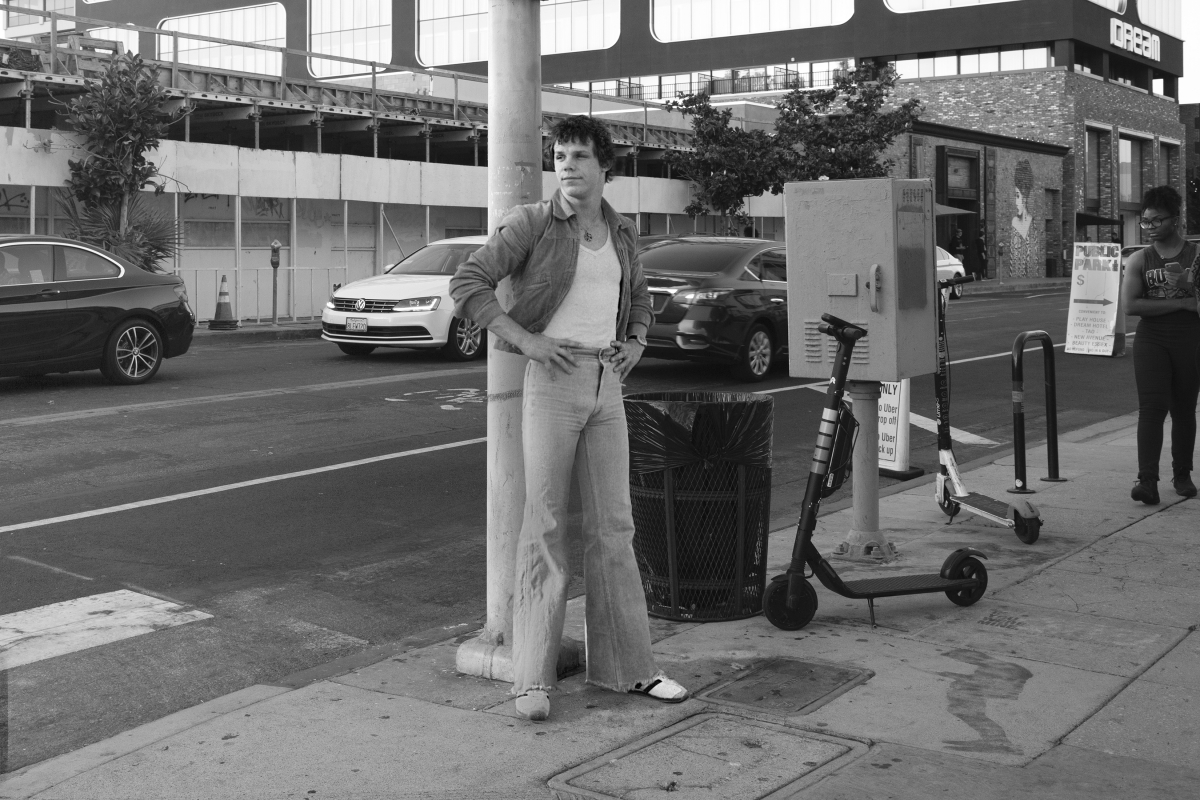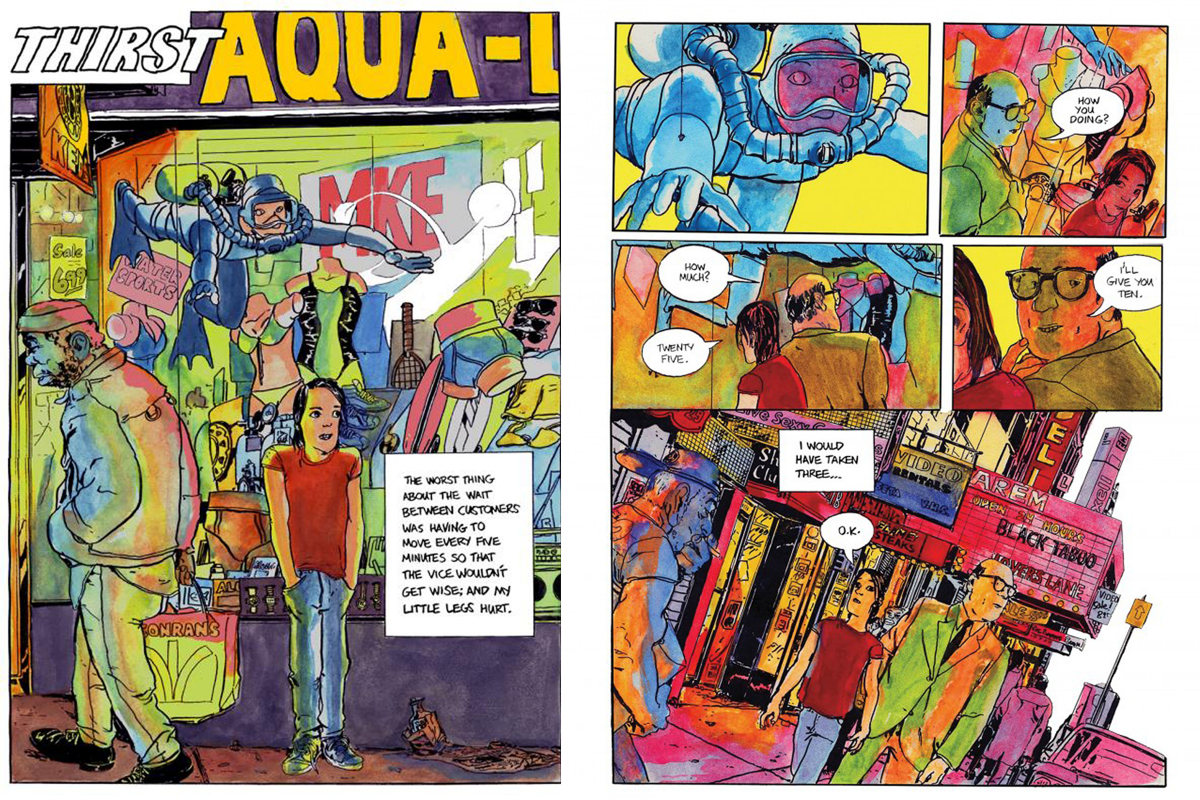
On Our Backs: The Revolutionary Art of Queer Sex Work
September 28, 2019 – January 19, 2020
Curated by Alexis Heller
The rights of sex workers...an issue of morality, legality or basic human rights? The York State legislation currently has two bills vying for passage to offer relief for sex workers from being swept up in the criminal justice center. One -- backed by State Senators Jessica Ramos (Queens) and Robert Jackson (Manhattan) -- favors full decriminalization while State Senator Liz Krueger (Manhattan) and Assembly member Tremaine Wright favor a variation called the Nordic Model or Equality Model which decriminalizes the actions of the sex worker but not the customer. This is a timely parallel to the current exhibition at the Leslie Lohman Museum, On Our Backs: The Revolutionary Art of Queer Sex Work.
While the bills have their advocates and foes on both sides, what is well documented that criminalization of sex workers makes them more vulnerable to violence, stigma and a lack of basic human rights. It also serves to increase sexually transmitted disease. While the legal aspect of these bills annotates the issues, On Our Backs works to humanize the issue further by telling the stories of the people in the Sex Worker Community.

Alexis Heller who is both a curator and a social worker with LGBTQ youth many of whom are sex workers, has informed the viewer with both art and artifacts to tell these stories. Surprisingly, the show seems less provocative than the title might suggest and more emotional as we learn of the subjects strengths, ideas, passions, and barriers. "I wanted to make a positive impact on the viewers -- to show that sex workers has overcome enormous obstacles." said Heller.
The show spans the 1970s to the present and features the work of Pat Rocco, Tee Corinne, David Wojnarowicz, Patrick Angus, Robert Blanchon, Leon Mostovoy, Annie Sprinkle, Veronica Vera were made in the 70s and 80s. However, Annie and Veronica's work extends into the early 90's, and the rest of the work in the show speak more to the contemporary moment, especially the video works by Ms. Naughty, Bruce LaBruce, Angelo Madsen Minax, Ajamu and Khalil West, shawne michaelain holloway, and Amber Hawk Swanson and Xandra Ibarra
In the Show there are people who are accepted by the art world such as Robert Mapplethorpe and and and Annie Sprinkles and people who are not identified as part of the art world but very much part of the experience.
Specific works such as the Peter Thomas letters and small archival material were borrowed from The One Archive in Los Angeles which had done an extraordinary job of preserving hundreds of letters between Peter Thomas and his clients. He really deserves to be acknowledged because of the beauty and complexity of his life Thomas advocated for safer sex and acted as an educator for his clients creating deep relationships and providing them with material care around HIV the complexity of her relationship with his family is alluded to that he'd made his clients his family.

There is a macramé piece done by Midori Laura, who is a Japanese sex worker specializing in bondage, that was commissioned for the exhibition. Midori wanted to create a "sacred space” or temple like feel where items that held special meaning and were no longer needed would be preserved and woven into this larger fabric.
According to Heller:
"In many ways this is a very psychological and physical space that allows you to enter into a space which takes care of your emotional needs. On another level, I think about it as if it were a dressing room both psychologically and physically and what the sex worker must prepare herself or himself for before contact in the field."
The Wall of Elders is comprised of 38 mini altars on shelves with the names of long-term sex worker activists, both living and passed. Pluma Sumaq, a multi-disciplinary artist and sex worker from California, created the mini altars, as well as a larger Money Alter which sits below the shelves and serves as a space to honor both her devout faith and sex worker identities and pay reverence to the sex worker community.

"I want people to walk away with an understanding that sex workers are human, and valuable, and deserving of care. That the sex worker community has contributed a great deal to social justice movements and culture and ideas around safety and healing through sex." Said Heller. In telling the individual stories MS Heller does just that -- she reflects not only on who the community is, but how they lived. On Our Backs is at the Leslie Lohman Museum until January 19th. - Kathleen Cullen & Michelangelo De Risi
